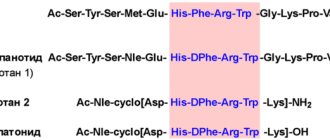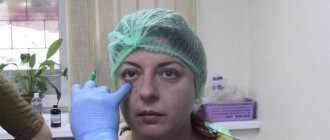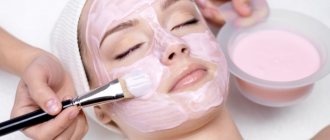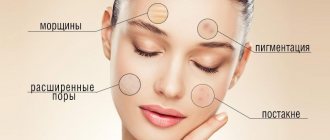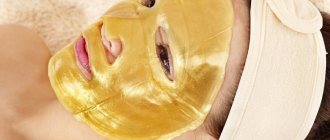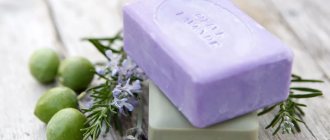Oh, these sunny marigolds are a sight to behold! In the last century they could be found in every yard. The flower got its name - calendula - precisely for its ability to show time following the sun. Look, this is a real dial, on which the petals bloom with the sunrise and gradually close, indicating that the day has come to an end. But calendula also has many other beneficial qualities that humanity has used a long time ago, healing the skin and the entire body as a whole.
In this article:
CompositionPropertiesIndications and contraindicationsTOP 10
Benefits of calendula tincture for facial skin
The yellow inflorescences of calendula officinalis contain useful substances in sufficient quantities:
- flavonoids , which have protective and anti-inflammatory properties;
- coumarins , which stimulate the process of cell regeneration, helping to maintain firmness and elasticity;
- carotenoids , tonic substances that promote rapid treatment of acne;
- phytoncides that prevent the development of inflammatory processes;
- micro- and macroelements that regulate the functioning of the sebaceous glands and have a rejuvenating effect;
- ascorbic acid , which has powerful antioxidant properties;
- etherols , which help cleanse the epidermis of toxins.
When used correctly, calendula flowers infused with alcohol have a positive effect on the condition of the skin. Using calendula tincture for facial skin:
- Helps treat acne and other formations and prevents their further spread. Effectively fights inflammation, acne, blackheads, and even boils on teenage skin.
- Helps in the treatment of rosacea, eliminates the unaesthetic mesh of rosacea.
- Accelerates the healing of abrasions, scratches, cracks, burns.
- Removes the effects of acne treatment: dark spots and small scars.
- Lightens pigmentation, evens out tone.
- Mattifies, dries the skin, removes greasy shine.
- Tightens pores. In combination with other products, it cleanses them. Prevents the formation of whiteheads and blackheads.
- Activates the regeneration process. Prevents the formation of age and facial wrinkles, evens out existing ones and makes them less pronounced.
- Restores elasticity and firmness, tightens the contour. Hides signs of aging skin.
Important! Calendula tincture dries out the epidermis. But its beneficial effect on the skin is obvious, so cosmetologists consider its use in home cosmetics to be completely justified.
Rosacea (from Latin rosacea
- “made of roses, pink”) is a chronic recurrent multifactorial disease, the main link in the pathogenesis of which is the pathological reaction of the vessels of the facial skin, clinically manifested by the initial appearance of facial hyperemia followed by the appearance of edematous papules, pustules, telangiectasia. The pathogenesis of rosacea is based on changes in the tone of the superficial arterial vessels of the skin, caused by the action of various exogenous and endogenous factors.
Rosacea is a very common disease, affecting up to 10% of all dermatological patients. Dermatosis is more common in fair-skinned people, as well as women (3 times more often than in men). In most cases, the disease debuts in the third or fourth decade of life and reaches its peak between 40 and 50 years.
The etiology of the disease is not fully known, and the mechanisms of its formation are largely unclear. In the pathogenesis of the disease, the leading role is given to exo- and endogenous factors. Among exogenous factors of alimentary nature, the leading role belongs to the intake of alcohol, coffee, spices, spicy foods, citrus fruits, as well as hot (over 60 °C) dishes and drinks. Nutritional factors contribute to the reflex expansion of the blood vessels of the face by stimulating the gastric mucosa. Physical agents that provoke a relapse of the disease include high and low temperatures and insolation.
For a long time, there was a speculative point of view among doctors about the almost etiological role of mites of the genus Demodex
in the development of rosacea.
Today it is generally accepted that D. folliculorum
is a necessary representative of skin normobiocenosis, and in rosacea
D. folliculorum
can act as a factor that only slightly aggravates the course of the disease.
Among the endogenous factors in the pathogenesis of rosacea, a significant role belongs to pathology and disorders of the endocrine system. Ovarian and pituitary insufficiency, thyroid diseases, pregnancy, menopause, and the premenstrual period are considered conditions that contribute to the progression of dermatosis. A decrease in the level of sex hormones (especially estrogen) during the perimenopausal period leads to the appearance of vasomotor symptoms (hot flashes, or prerosacea). It has been established that estrogens have anti-inflammatory activity, and their deficiency in menopause shifts the balance towards the formation of chronic inflammation with compensatory activation of pro-inflammatory cytokines (TNF-α, IL-1α, IL-6, IL-8).
A key role in the pathogenesis of rosacea belongs to the disorganization of elastin and collagen fibers of the microvasculature. Of particular pathogenetic importance is dysregulation of the brain's influence on the blood vessels of the facial skin. As a result, there is a slowdown in the redistribution of blood flow and venous stasis in the area of the outflow of the facial or angular vein, which corresponds to the most common topography of rosacea. The area of outflow of the facial vein also includes the conjunctiva, which explains the frequent involvement of the eyes in this disease. Since rosacea rashes are mainly localized over the inactive muscles of the face, the swelling is not drained by muscle contractions (unlike the eyelids and lips), and the skin does not gather into thin folds. There is a version that blood and lymphatic vessels are not primarily involved in the inflammatory process, and vascular dilatation apparently occurs indirectly and is caused by actinic elastosis.
Among cytokines, the leading role in the pathogenesis of rosacea belongs to vascular endothelial growth factor (VEGF), which has vasodilating properties that are 50,000 times greater than those of histamine. The result is a sharp increase in vascular permeability and vasodilation, increased production of the enzyme MMPs (matrix metalloproteinase), which ultimately leads to degradation of the fibers supporting the blood vessels, atony of the vascular walls and vascular fragility [1-4].
Rosacea is often associated with seborrheic diseases, diseases of the follicles and sebaceous glands. The importance of seborrhea as an element of the pathogenesis of rosacea is supported by the predominant localization of the disease in seborrheic areas and the effectiveness of isotretinoin and antiandrogens. However, neither qualitative nor quantitative changes in the secretion of the sebaceous glands are observed in rosacea.
Most likely, rosacea represents a certain pattern of reaction to various factors, in which a polyetiological clinical picture is formed, with the main significance belonging to the endogenous pathology of the elastin-collagen perivascular matrix and the pathological reaction of blood vessels, developing under the influence of vasoactive peptides, antibodies and circulating immune complexes, which in ultimately manifested by increased blood flow into the skin and its stagnation due to a decrease in the drainage function of lymphatic and venous vessels.
In clinical terms, the most convenient classification of the disease is proposed by J. Wilkin.
- Prerosacea - transient erythema (hot flashes).
- Vascular rosacea - persistent erythema and telangiectasia.
- Inflammatory, or papulopustular rosacea.
- Severe (conglobate) or late rosacea (including rhinophyma) with the formation of painful nodules and cysts.
It is customary to separately distinguish a special clinical type of the disease - ophthalmic rosacea (with localization of rashes mainly in the eyelid area).
The debut of rosacea, as a rule, is an unstable transient erythema, the duration of which varies from several minutes to several hours, it is accompanied by a feeling of heat or warmth and then disappears without a trace, but under the influence of provoking factors it appears again. Its localization is often limited to the nasobuccal folds. In a state of such frequent relapses followed by remissions, the process can continue for many months and years. However, later, moderate infiltration appears at the site of hyperemia, and telangiectasias are formed. The erythema becomes more intense with a bluish tint, often spreading to the areas of the cheeks, forehead and chin surrounding the nose.
Later, against the background of diffuse thickening of the affected skin, isolated or grouped inflammatory pink-red papules appear, often covered with delicate scales. Papules can persist for many days or weeks. Next, most of the nodules undergo suppuration, forming pustules. The lesion spreads from the centrofacial area to the skin of the forehead (to the border of hair growth), behind-the-ear areas, and the anterior surface of the neck.
Over time, due to a chronic progressive course, the pathological process leads to the formation of inflammatory nodes and cysts due to progressive hyperplasia of connective tissue and sebaceous glands, and persistent vasodilation. These changes primarily affect the nose and cheeks, less often the chin, forehead and ears, creating a pronounced disfiguring effect. This infiltrative-productive stage of the disease is sometimes considered as an independent form - rhinophyma
(bumpy nose), which occurs exclusively in men.
The shape of the nose becomes asymmetrical, and numerous large telangiectasias are located against the background of congestive cyanotic erythema. The functional activity of the sebaceous glands is sharply increased. Similar changes are noted in places of other localization: on the chin - gnathophyma
, in the area of the glabella -
metaphyma
, on the earlobes -
otophyma
, and also on the eyelids -
blepharophyma
.
Often the eyes are involved in the pathological process of rosacea, and the process is called ophthalmic rosacea
. In approximately 20% of cases, these changes precede skin manifestations, in 27% they debut simultaneously with them, and in 53% of cases skin manifestations precede eye damage. Subjectively, ophthalmic rosacea is characterized by a burning sensation, soreness, photophobia and foreign body sensation. An unfavorable prognosis is observed with rosacea keratitis: due to persistent clouding of the cornea, the process can lead to a significant decrease in vision.
Special forms include steroid
rosacea
, which develops in patients who have used corticosteroid ointments for a long time, especially halogenated ones (containing fluorine or chlorine). As a result, the phenomenon of “steroid skin” occurs with mild subatrophy and extensive dark red erythema, on the surface of which telangiectasia and papulopustular elements are located. After discontinuation of external corticosteroids, as a rule, there is a temporary exacerbation.
The most severe variant of conglobate rosacea is fulminant
(fulminant) rosacea, which occurs almost exclusively in young women. The disease begins acutely, inflammatory nodes quickly merge into powerful conglomerates, fluctuation appears, sinuses and fistulas form. The general condition, as a rule, suffers slightly.
A rare form of rosacea that is not always diagnosed is solid persistent swelling of the face (rosacea-lymphoedema, or Morbighan disease), in which, against the background of morphological elements typical of rosacea, there is dense swelling on the forehead, chin, eyelids, nose, and/or that does not retain pits when pressed. or cheeks. In essence, we are not talking about edema itself, but about an increase in connective tissue and accompanying fibrosis, occurring against the background of chronic inflammation and lymphostasis. Pathohistologically, numerous mast cells are found, which apparently contribute to the development of fibrosis [1-3].
In therapeutic terms, patients with rosacea should avoid sun exposure (use wide-brimmed hats, photoprotective drugs with the maximum photoprotection index against ultraviolet rays, A and B), and not visit solariums, baths, and steam rooms. It is necessary to follow an appropriate diet: abstain from alcoholic beverages, coffee, hot food and drinks, hot and spicy foods.
At the initial stage (erythematous), preference is given to cold lotions of 1-2% boric acid solution, 1-2% resorcinol solution, herbal lotions (infusions of tea, chamomile, string, sage, St. John's wort, marshmallow root). Cold lotions are known to promote anemia of the skin, reduce heat influx, and eliminate the subjective sensation of burning and heat. At the same time, boric acid, resorcinol and medicinal plants, to varying degrees, have antipruritic, anti-inflammatory, epithelializing and antimicrobial effects. At this stage, a rotational massage is performed to enhance lymphatic drainage and eliminate swelling. The technique consists of stroking the area of the nose, forehead and cheeks twice daily (morning and evening); duration is several minutes [1, 2].
The use of external hormonal preparations for rosacea is inappropriate, and those containing halogens (fluorine and/or chlorine) are prohibited. For mild forms of rosacea, the use of a cream based on activated zinc pyrithione, as well as a drug based on a calcineurin inhibitor, is promising [5].
Taking into account the basic requirements for a product for therapeutic skin care for patients with rosacea (reduction of redness, softening, moisturizing, protection from external factors and good tolerance), the Bioderma laboratory (Asentus, France) has developed a series of Sensibio
.
Sensibio
H2O micellar solution , the main components of which are fatty acid esters and cucumber extract, is ideal for cleansing sensitive, thin, redness-prone skin, as well as for cleansing the eye contour (including waterproof makeup) The product does not contain alcohol, alkali or fragrances, perfectly cleanses the skin, removes makeup, does not violate the integrity of the water-lipid mantle, soothes and moisturizes the skin, does not require rinsing with water, except for the eye contour. Used 1-2 times a day.
During periods of exacerbation of rosacea, it is advisable to use Sensibio Forte cream
, which quickly soothes the skin, reduces its hyperreactivity (contains 2% enoxolone, allantoin, canola, vitamin E) and restores the hydrolipid balance of the skin. The product has proven itself excellent for perioral dermatitis and after aggressive dermatocosmetological interventions (electrocoagulation, laser, dermabrasion, peeling, use of retinoids).
After the exacerbation subsides, it is recommended to switch to the use of Sensibio AR cream
, which interrupts the pathogenetic link of the disease, suppressing the synthesis of VEGF thanks to the main component “Rosaktiv” (green tea has an antioxidant effect, ginkgo biloba strengthens the walls of blood vessels, soy genistein prevents erythema). The product is applied 2-3 times a day to previously cleansed skin. It eliminates skin tightness and discomfort (enoxolone, allantoin, canola), provides long-lasting hydration (hydroxyproline, avocado phytosterols, glycerin).
In the subacute period, long-term use of Sensibio Rish cream
(for dry skin) or
Sensibio Light
(for normal skin).
The Toleridine complex (enoxolone + Laminaria extract), which is the basis of the product, provides daily care for sensitive skin prone to redness, increases skin tolerance to external influences and has a moisturizing effect. Sensibio
products are hypoallergenic, non-comedogenic and serve as an excellent base for makeup.
Sensibio eye contour gel has been developed for daily care of sensitive skin around
, which has anti-edematous, anti-inflammatory and moisturizing effects. The gel smoothes out fine wrinkles and allows you to apply makeup. The patented Toleridine complex protects the skin of the eye contour throughout the day, increasing its resistance to external aggressive factors. The gel has a light texture and is suitable for contact lens wearers. It is applied 1-2 times a day to previously cleansed skin.
Dermatological water Sensibio
, containing a perfectly balanced composition of minerals and oligoelements, with regular and long-term use helps reduce erythema, burning sensation and increases skin tolerance to external influences.
Specific photoprotection of thin, fragile skin with redness and an expanded capillary network is ensured by regular use of Photoderm AR
(it is recommended to renew applications every 2 hours). The Cellular Bioprotection Complex provides photoprotection at the level of cellular structures. The presence of sunscreen filters prevents endothelial cell apoptosis. The Rosaktiv complex has an antioxidant effect, strengthens the walls of blood vessels, and prevents erythema. Enoxolone and vitamin E have anti-inflammatory and antiradical effects [6].
Considering that rosacea occurs much more often in women and debuts with the onset of menopause, menopausal hormonal therapy (MHT) with estrogen-gestagen drugs based on 1 mg of estradiol and 2 mg of drospirenone should be considered a promising etiopathogenetically based method of treatment and prevention of this dermatosis in women. Since the antirosacea effect on the skin of drugs for MHT does not appear earlier than 6-8 months of therapy, the patient must be warned about the delayed effect and convinced of the advisability of using external agents that have a pronounced effect on the vascular wall and are not irritating. In terms of efficacy/tolerability parameters in this complex treatment, preference should be given to drugs from the Sensibio
, in particular,
Sensibio AR cream
[4].
Long-term (at least 8 months) use of a drug based on isotretinoin (13-cis-retinoic acid) should be considered a pathogenetically substantiated means for systemic therapy of rosacea (especially its severe forms - papulopustular and conglobate forms). As in the case of systemic treatment of the disease with drugs for MHT, the combined use of skin care products, in particular Sensibio Rish cream,
, which perfectly compensates for the vascular phenomena of both the underlying disease and the manifestations of inevitable retinoid dermatitis [7].
21 men (mean age 47±3.2 years) and 27 women (mean age 45±2.1 years) were observed. All patients cleansed their face with Sensibio N
2
O
, irrigated the skin
with Sensibio water
and, if necessary, used
Photoderm AR cream
.
During the 1st month, Sensibio Forte cream
, over the next 3 months -
AR
cream (2 times a day), followed by a transition to
Sensibio Rish cream
or
Sensibio Light cream
, depending on skin type (long term).
In 23 patients (7 men and 9 women) with the erythematous stage of the disease who received monotherapy with Sensibio
over the course of 6 months, we managed to achieve regression of erythema by the end of treatment by 2.4 points (on a 3-point scale of symptom severity), and telangiectasia by 5.7 points on average for the group;
and also develop an algorithm for the sequential use of Sensibio
.
Together with gynecologists-endocrinologists, we observed 7 women with symptoms of pre- or erythematous rosacea, who, for gynecological indications, were prescribed MHT with a drug based on 1 mg of estradiol and 2 mg of drospirenone for a long period. To achieve a faster antirosacea effect, they were recommended external therapy according to the above-described scheme. By the end of 6 months of observation, there was a regression of erythema by 2.8 points, telangiectasia by 7.2 points on average for the group. Such a pronounced antirosacea effect is explained by the synergistic effect on the main links in the pathogenesis of the disease by the drug for MHT and the Sensibio
.
20 patients (9 men and 11 women) with papular and/or papulopustular stages of the disease received sequential external therapy. During the first 2 months, a cream based on activated zinc pyrithione was used (daily morning and evening), followed by a transition to Sensibio AR
for 3 months (daily morning and evening). By the end of the 5th month of sequential therapy, the pustules completely disappeared, papules regressed by 83%, erythema by 91%, telangiectasia by 46%.
Complex therapy with a systemic drug based on isotretinoin + Lidose and Sesibio Rish cream
was prescribed to 5 men with rosacea conglobata.
The daily dosage of isotretinoin+ Lidose was 0.8 mg per 1 kg of body weight per day. Treatment continued until the course dose of the drug was reached, amounting to 100-120 mg per 1 kg of body weight (about 9 months). Considering the inevitable development of retinoid dermatitis during the first 2-3 months of therapy with a systemic drug, all patients were prescribed corrective care with Sensibio Riche cream
(morning and evening). By the end of the therapy period, all patients showed a state of clinical recovery, the symptoms of retinoid dermatitis regressed by the beginning of the 2nd month of complex therapy.
Thus, the use of Sebium anti-rosacea line allowed us to:
— develop a scheme for the sequential use of drugs in patients with the erythematous stage of the disease;
— to increase the effectiveness of sequential therapy using a cream based on activated zinc perithion in patients with the papulopustular stage;
— prove the feasibility of including drugs for external care in the combined treatment of women receiving MHT;
— significantly improve the tolerability of therapy for the conglobate form of the disease with a drug based on systemic isotretinoin.
Directions for use and precautions
The instructions for the pharmacy tincture do not contain information regarding its use to solve cosmetic problems. Therefore, in order for its use to be as useful as possible and not cause harm, you should listen to the recommendations of experts:
- Before use, read the contraindications.
- Eliminate the risk of allergies. To do this, the effect of the tincture on the skin needs to be tested on a small area in the wrist area.
- Do not use a product whose expiration date has expired.
- In its pure form, use the tincture only for spot treatment of acne and inflamed lesions. Very often, its application to the entire surface of the face causes severe redness, in some cases leading to burns.
- Apply the solution only to cleansed skin.
- The tincture should not be abused; its use should be stopped as soon as the problem is eliminated.
- If the course of procedures needs to be repeated, it is necessary to maintain an interval of 2-3 weeks.
- Keep lotions, compresses, masks containing alcohol tincture on the face for no longer than 10 minutes (unless the recipe specifies a different time).
The undiluted drug must be used, having correctly calculated the concentration and exposure time, so that the tincture does not lose its valuable properties, but remains safe. Cosmetologists recommend the following proportions for diluting the tincture:
| Skin type | Proportions |
| Oily skin | 1 part water to 3 parts preparation |
| Normal or combination skin | water and tincture are diluted in equal proportions |
| Dry and sensitive skin (very rarely used) | 3 parts water to 1 part tincture |
The exposure time of the masks is determined by the properties of the additional ingredients. For example, it is not recommended to keep a composition containing aggressive ingredients (acids, mustard) for longer than 10 minutes, and masks containing oils and other softening ingredients are allowed to be left on the face for up to half an hour.
The tincture is effective in solving a large number of skin problems. But do not forget that for the treatment of serious diseases it can only act as an additional treatment.
Methods of using the tincture
Calendula tincture has found its use in many areas. In home cosmetology, it is used in pure form or together with other ingredients in masks and lotions.
For acne and blackheads
Calendula has long been famous for its antibacterial, anti-inflammatory and restorative properties. Thanks to this, the tincture is ideal for the treatment and comprehensive care of problem skin. With its help you can get rid of rashes, black and whiteheads, pustules. There are many folk recipes that will help improve skin health.
In undiluted form, the tincture is used only spot on. It is carefully applied with a swab to the affected areas and washed off after an hour. A product made from:
- tinctures – 2 tablespoons;
- wheat flour - tbsp. spoon;
- aloe leaf juice – 3 tbsp. spoons;
- clean water - half a glass.
Mix water, tincture, aloe. Add flour to a homogeneous liquid mixture. Stir until no lumps remain. Distribute the composition evenly on the face, rinse after 15 minutes.
Rubbing your face with a mixture of calendula and chloramphenicol will help you cope with purulent acne. The solution is prepared directly in a bottle with pharmacy tincture. It is enough to add 3 crushed tablets of chloramphenicol to it and shake until they completely dissolve. You can enhance the effect of the solution by adding 3 aspirin tablets. The prepared solution must be applied to acne three times a day. The bottle and contents must be shaken before use.
For pigment spots
Rubbing the face with calendula tincture perfectly whitens the skin and helps eliminate pigment spots, both seasonal (freckles) and age-related.
A solution made from equal amounts of tincture and lemon juice will help hide freckles. This lotion is suitable for those with oily skin, and for those with combination or normal skin, it is better to replace lemon juice with cucumber juice. Problem areas can be treated with the solution 2-3 times a day.
To combat age spots, another solution is more suitable. For preparation you will need:
- tincture;
- lemon juice;
- almond oil (you can use olive or other vegetable oil);
- natural currant juice (preferably black).
Mix all components in equal quantities in one container. Several times a day, the solution should be used to wipe the areas where pigment spots have formed. You can store the prepared product for no longer than a day, so you should not prepare it in large quantities. The results of using calendula will be noticeable within a week of systematic procedures.
The tincture in its pure form will help get rid of dark spots on the face and small scars left from improper acne treatment. Using cotton wool, it is rubbed into the affected areas of the skin. This causes increased blood circulation, due to which the epidermis is restored and the scars become less pronounced.
Indications for use
Most often, calendula-based preparations are used to treat problematic oily skin. If used for dry skin, additional moisturizing is required. Calendula is indicated for problems such as:
- facial skin irritation;
- disruption of the glands;
- pimples or acne marks;
- enlarged pores;
- pigmentation;
- signs of skin aging.
When choosing a skin treatment, there are some factors to consider:
- the infusion is contraindicated for people with sensitive skin;
- the product cannot be used to treat open wounds;
- during the use of masks, a small amount of their components penetrates into the blood, therefore calendula, which lowers blood pressure, is contraindicated for people who suffer from hypotension;
- an allergic reaction may develop, especially in people sensitive to pollen;
- atopic dermatitis, which many doctors also associate with allergies, is a contraindication for the use of preparations containing calendula.
Help Calendula tincture for the face is applied topically, applied only to the affected areas. Otherwise, the alcohol contained in the preparation will dry it out.
Masks
Masks are incredibly useful, they nourish, moisturize, heal, and have a rejuvenating effect on the skin. As part of homemade masks, the properties of calendula are complemented by the properties of other components. Therefore, the solution can have a complex effect on the skin.
For oily skin
The composition will help cleanse pores of sebaceous accumulations, prevent inflammation and the formation of acne. After the procedure, the skin becomes matte, clean and smooth. Compound:
- calendula tincture – 20 ml. (1.5 tbsp);
- oat flour (can be replaced with wheat flour);
- warm purified water – 100 ml. (half a glass).
Combine calendula with water. Add such an amount of flour into the solution, stirring constantly, so that the resulting mixture is thick and reminiscent of sour cream. Keep the mask on your face for 20-30 minutes. Repeat the procedure once every 3-7 days.
After facial cleansing
A calendula compress mask will help to disinfect and soothe the epidermis after cleansing or scrubbing. The product serves as an effective prevention against complications and unpleasant consequences that may arise after cleaning procedures.
Dilute the alcohol-containing tincture with clean water in the proportion: a tablespoon of the drug to 5 tablespoons of water. Prepare a napkin made of soft natural fabric with slits around the eyes and mouth. Soak it in the solution and apply it to your face. This must be done so that the composition does not get into the eyes and lips. If this happens, the solution must be washed off immediately with clean water. After 20 minutes, remove the compress and wipe your face with a cotton swab or blot with a soft cloth.
For dry, irritated skin
Those with dry, poorly moisturized skin can only use alcohol tincture together with substances that will soften its aggressive effect. For example, a composition of tincture and Vaseline will care for dry skin, but will not cause unpleasant consequences, drying out or irritation. Compound:
- calendula tincture – 2 tablespoons;
- Vaseline – 2 tablespoons.
Combine the components, stirring until a homogeneous mass is obtained. Spread the composition on the face, after 20 minutes remove with a soft cloth, rinse the face. There is another way to prepare a mask that cares for dry skin. The tincture is mixed with potato starch in arbitrary proportions, but so that the result is a jelly mass. It is applied to the skin for 20 minutes. Using calendula tincture together with starch will moisturize the skin, provide useful elements, and make it pleasant and velvety.
Useful properties of the plant
The chemical composition of calendula determines its healing properties. It contains high concentrations of biologically active substances, such as:
- salicylates;
- flavonoids;
- essential oils;
- vitamins B and A;
- organic acids;
- tannins;
- triterpenoids;
- carotenoids, etc.
The active compounds present in this plant have a complex healing effect on the skin of the face. They help reduce the production of subcutaneous fat and reduce pores. There are pronounced antibacterial and anti-inflammatory effects. Cosmetics based on this plant destroy most types of bacteria that cause acne.
The compounds present in the composition help even out skin pigmentation tone. In addition, they promote blood thinning, thereby helping to eliminate rosacea on the face. The use of recipes based on this medicinal plant in cosmetology shows a good effect in the treatment of demodicosis, because The active substances present in calendula help to deeply cleanse the skin and eliminate the breeding ground needed for mites. A pronounced rejuvenating effect is noted.
Contraindications
Despite its natural origin and many beneficial properties, the drug has a number of contraindications. These include:
- Hypersensitive, thin skin.
- Individual intolerance.
- Excessive dryness and flaking of the epidermis.
- Presence of open wounds in the area of application.
- Chronic dermatological diseases requiring systematic treatment.
Even when used externally, the tincture can cause harm to people suffering from diseases of the respiratory system, especially asthma. Therefore, before using it, you should consult a doctor. People with dry skin should use this alcohol tincture with caution. Side effects from non-compliance with the rules of use can manifest themselves in the form of:
- severe dryness;
- tightness;
- redness;
- peeling;
- irritation.
If these symptoms appear, you should stop using the tincture for some time or at least reduce the frequency of procedures and the concentration of the drug. To ensure that cosmetic procedures using the tincture do not cause harm, you must strictly follow the recipe and follow the instructions for use.
Recipe for making tincture at home
Alcohol tincture of calendula can be easily purchased at any pharmacy at an affordable price. But it’s also not difficult to prepare it yourself.
To do this you need:
- 2 tbsp. Grind tablespoons of fresh or dried calendula officinalis inflorescences and place them in a ceramic container or dark glass vessel.
- Pour 200 ml (glass) of vodka or medical alcohol diluted to 40°.
- Close the container tightly.
- Place in a place where the sun's rays do not penetrate.
- After 12-15 days, when the tincture is ready, strain the liquid through a multi-layer gauze cloth or a fine strainer.
The finished tincture should be stored in a container that does not allow bright sunlight to pass through, preferably in a cool place. Use it as needed. The tincture retains its properties for no longer than a year.
Important! The properties of a self-prepared tincture are a little weaker than those from a pharmacy, but with regular use, it exhibits them to the fullest.
Rubbing the face with calendula tincture is a universal procedure that helps to cope with many cosmetic and dermatological problems. But, despite all the advantages of the drug, when using it, you should not forget about contraindications and precautions.

